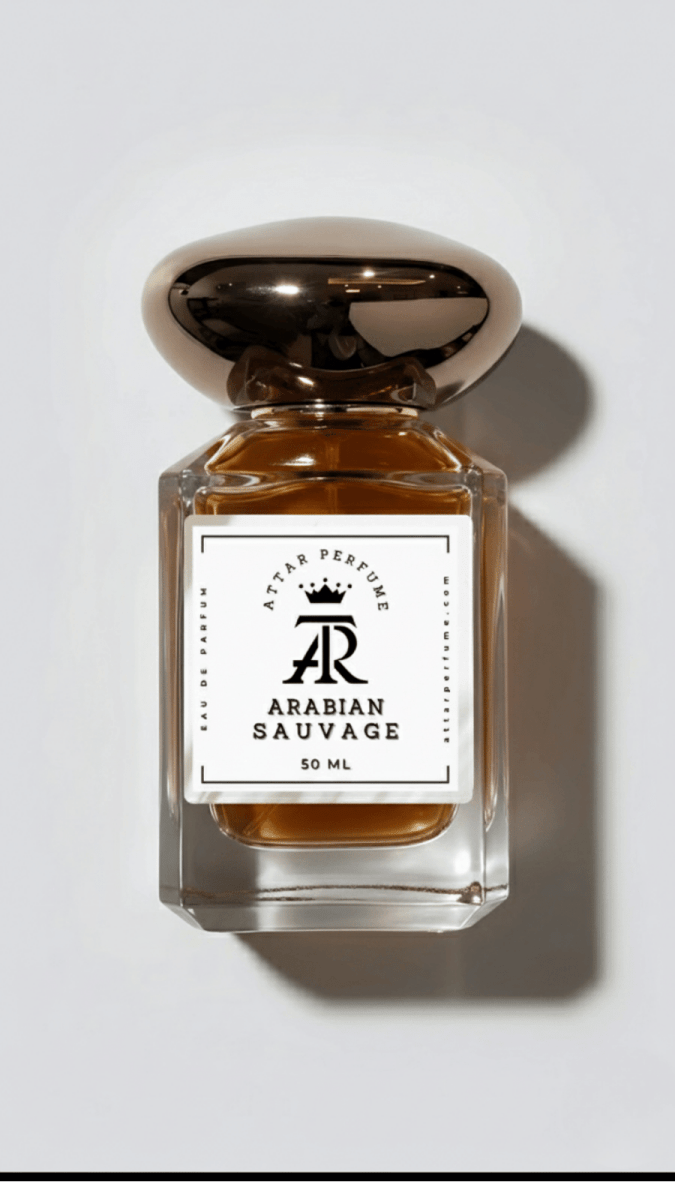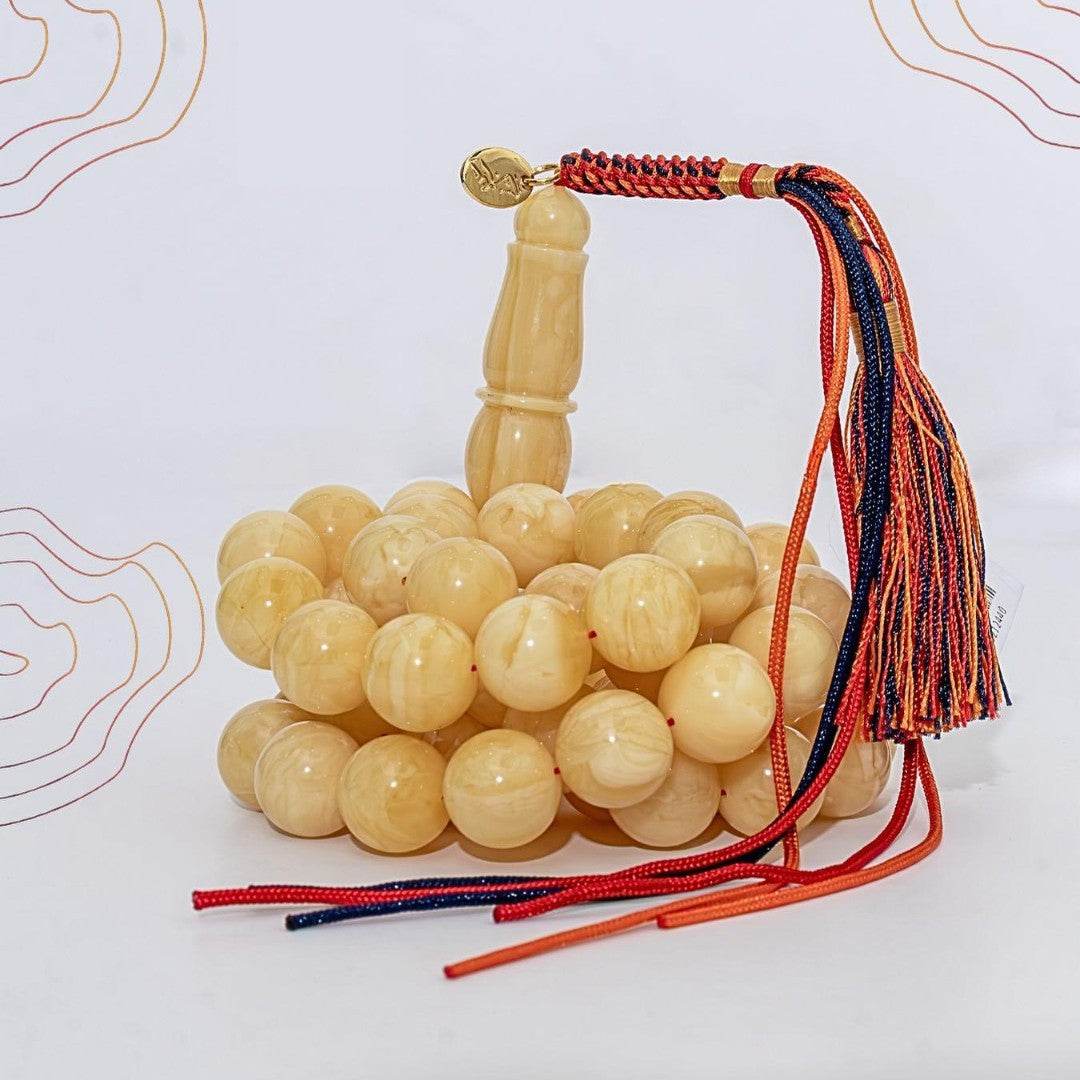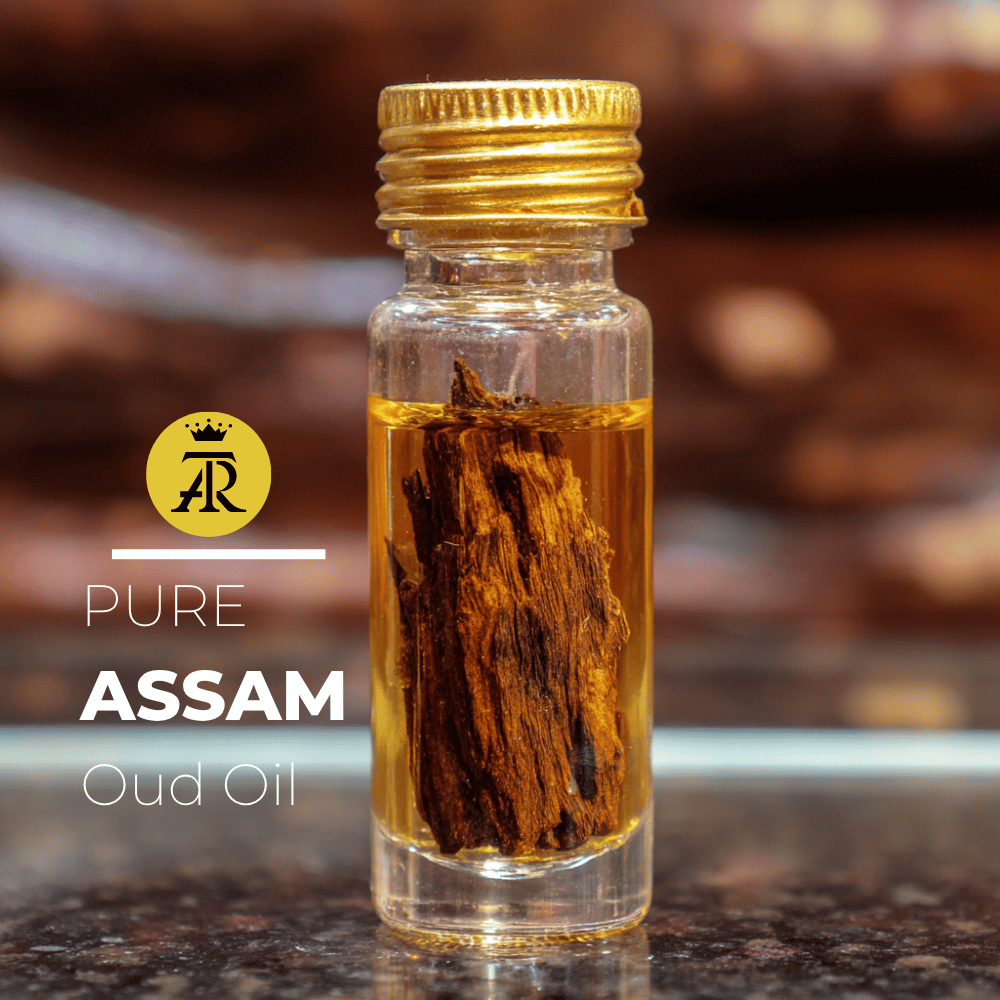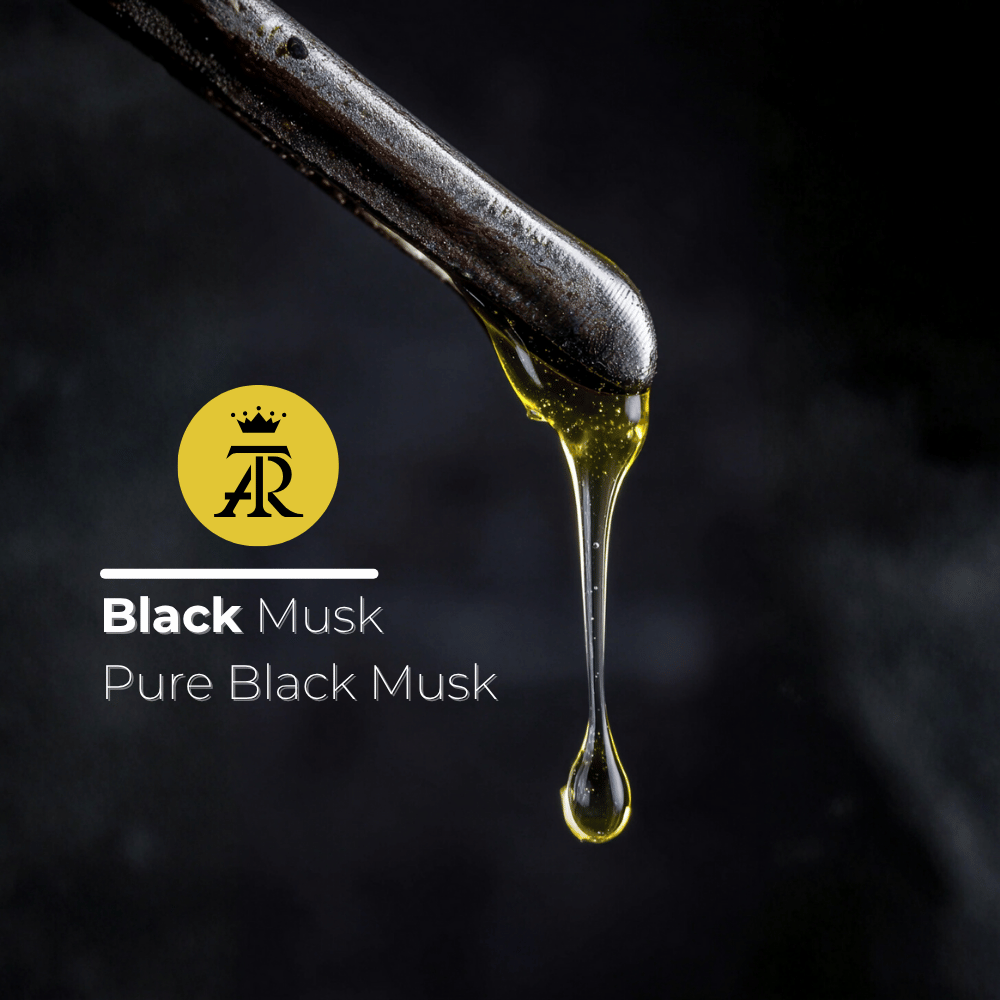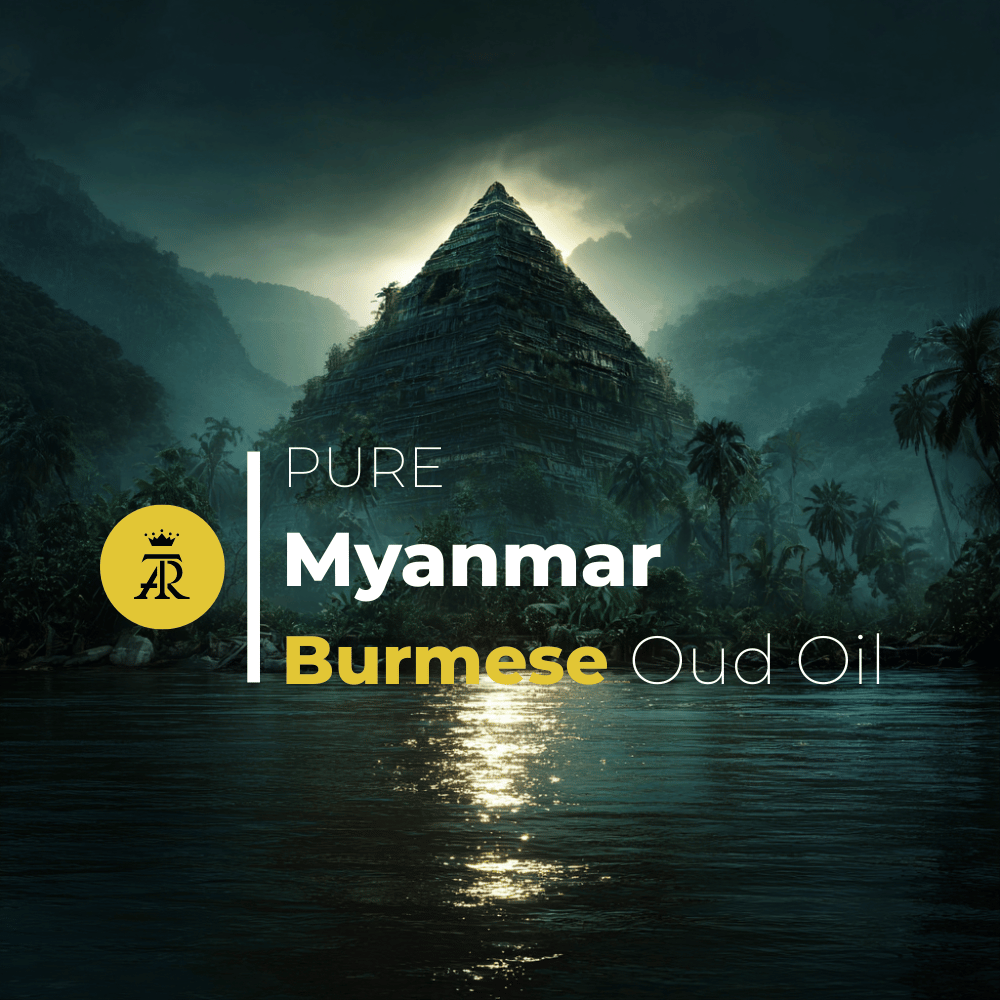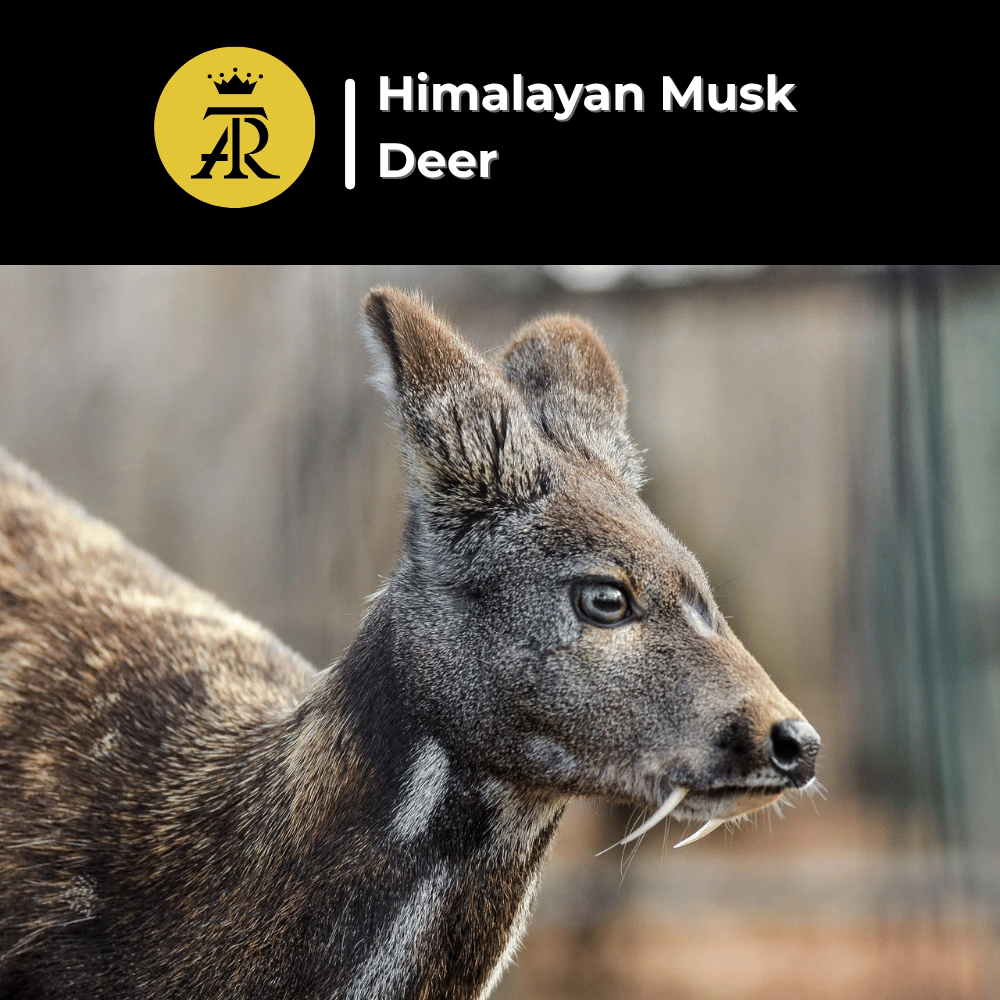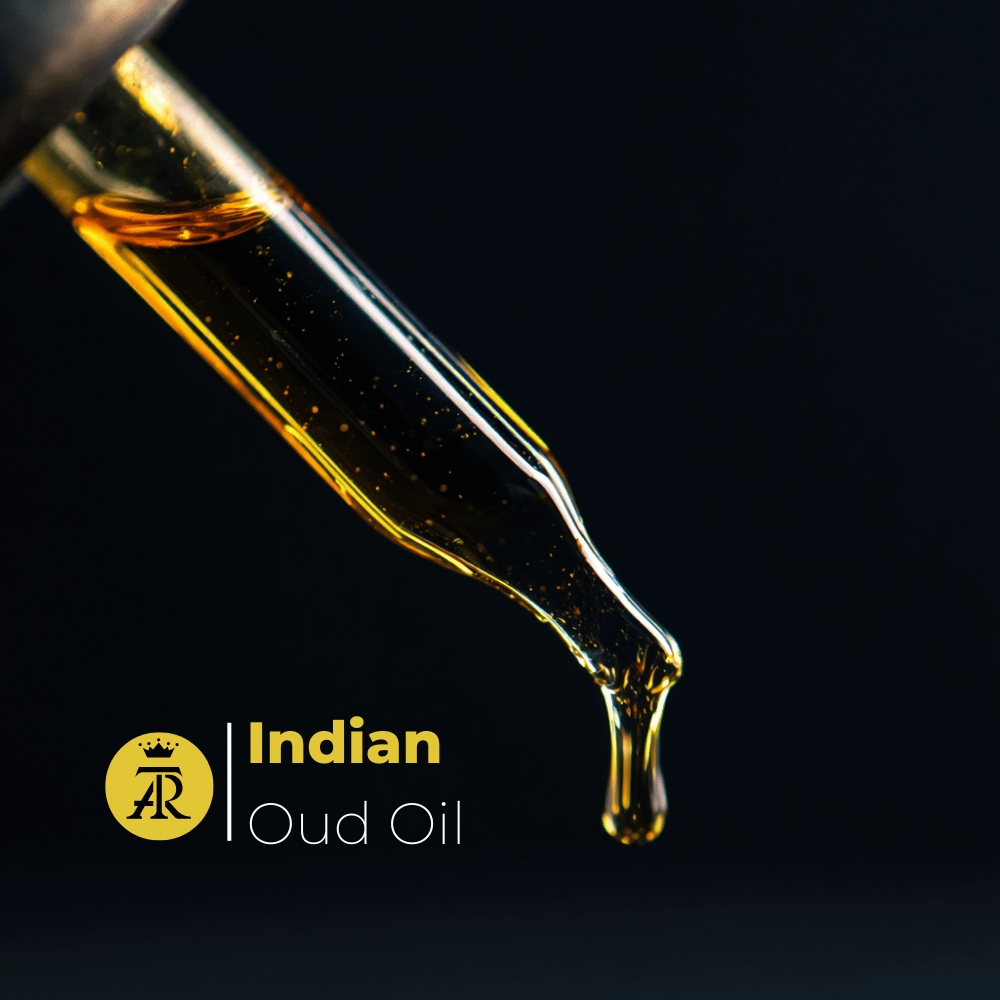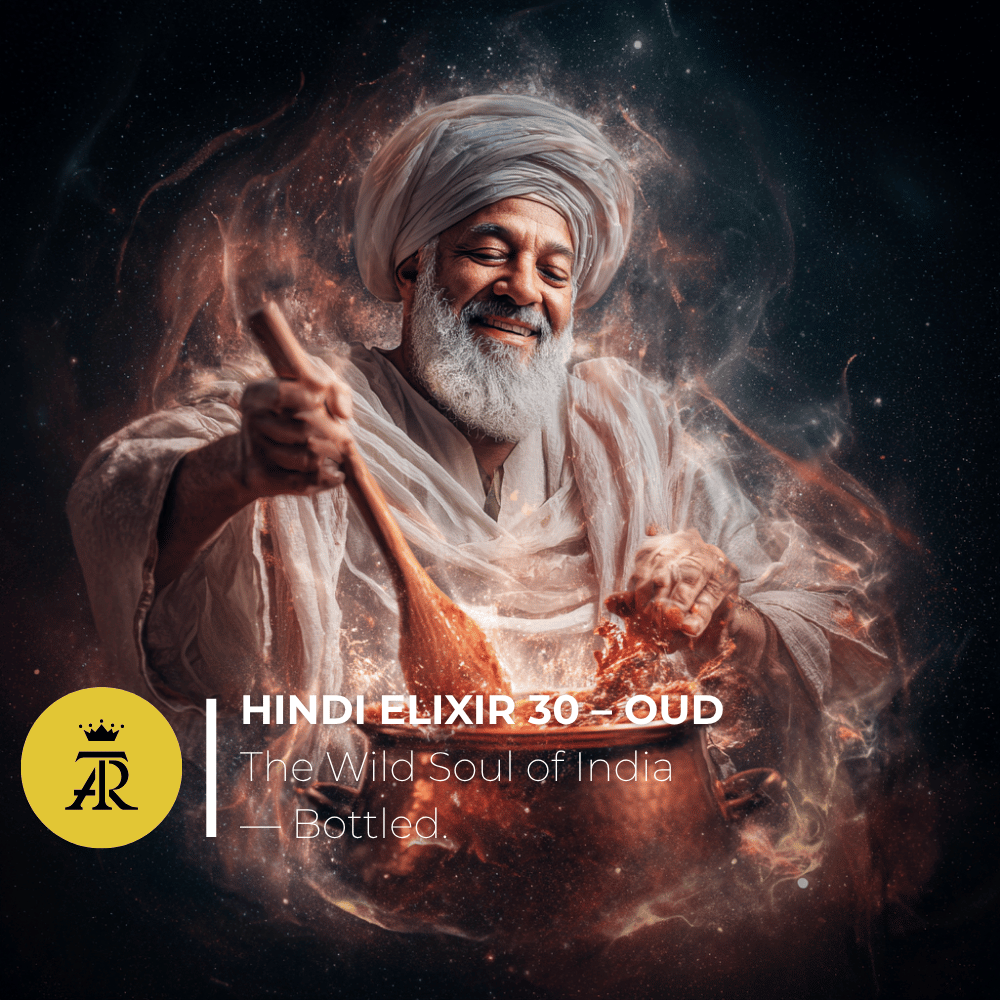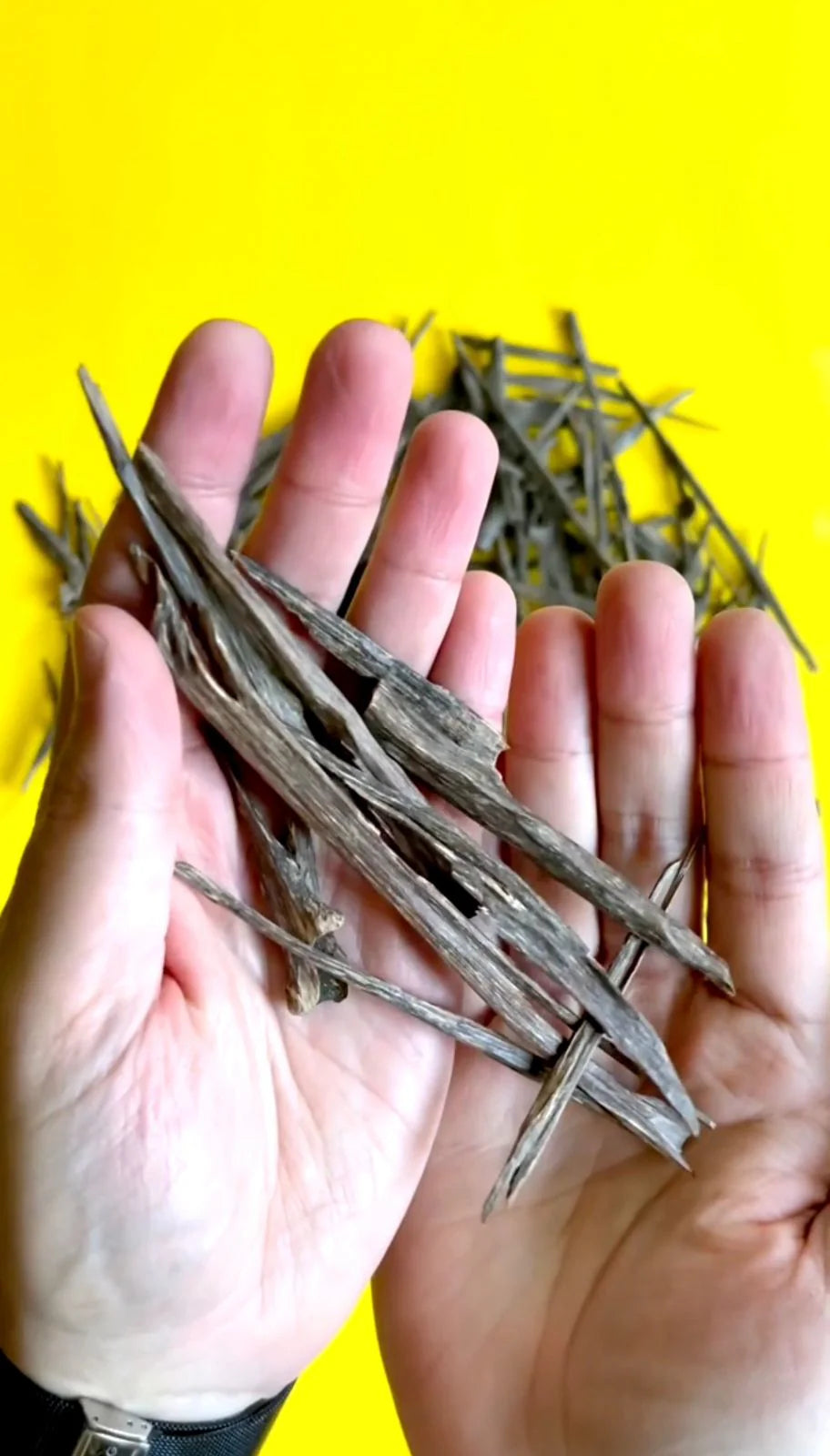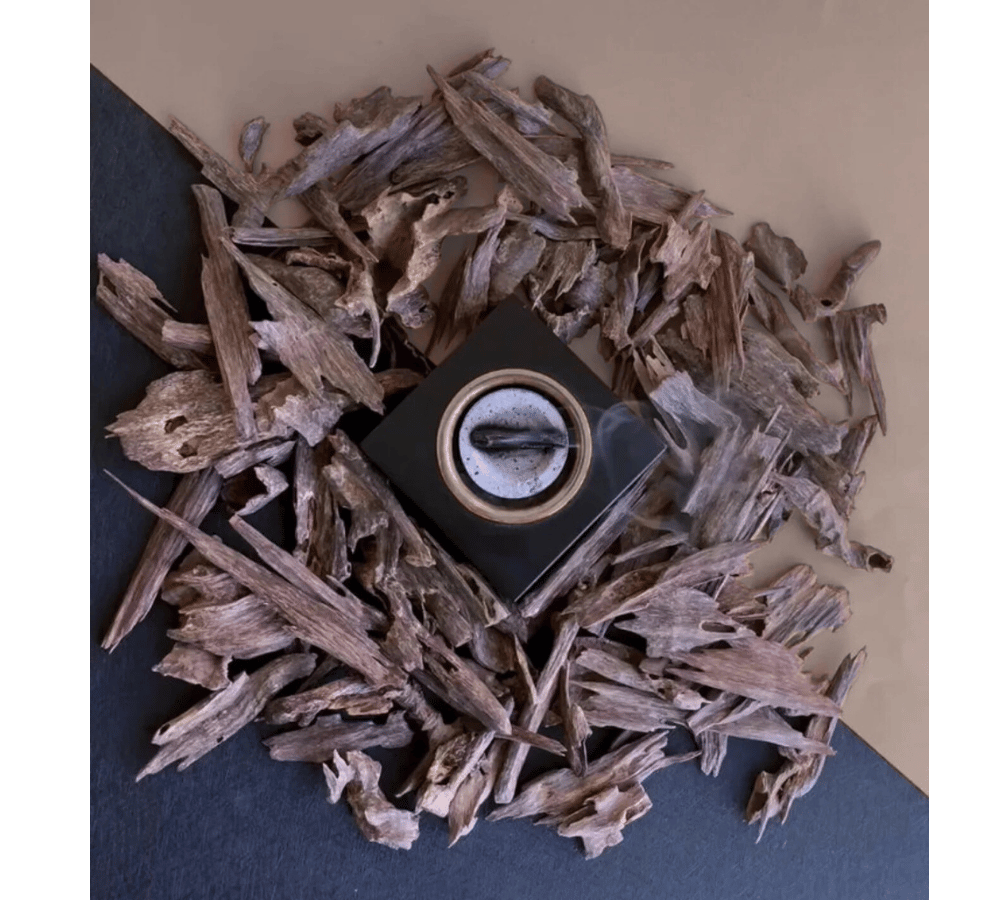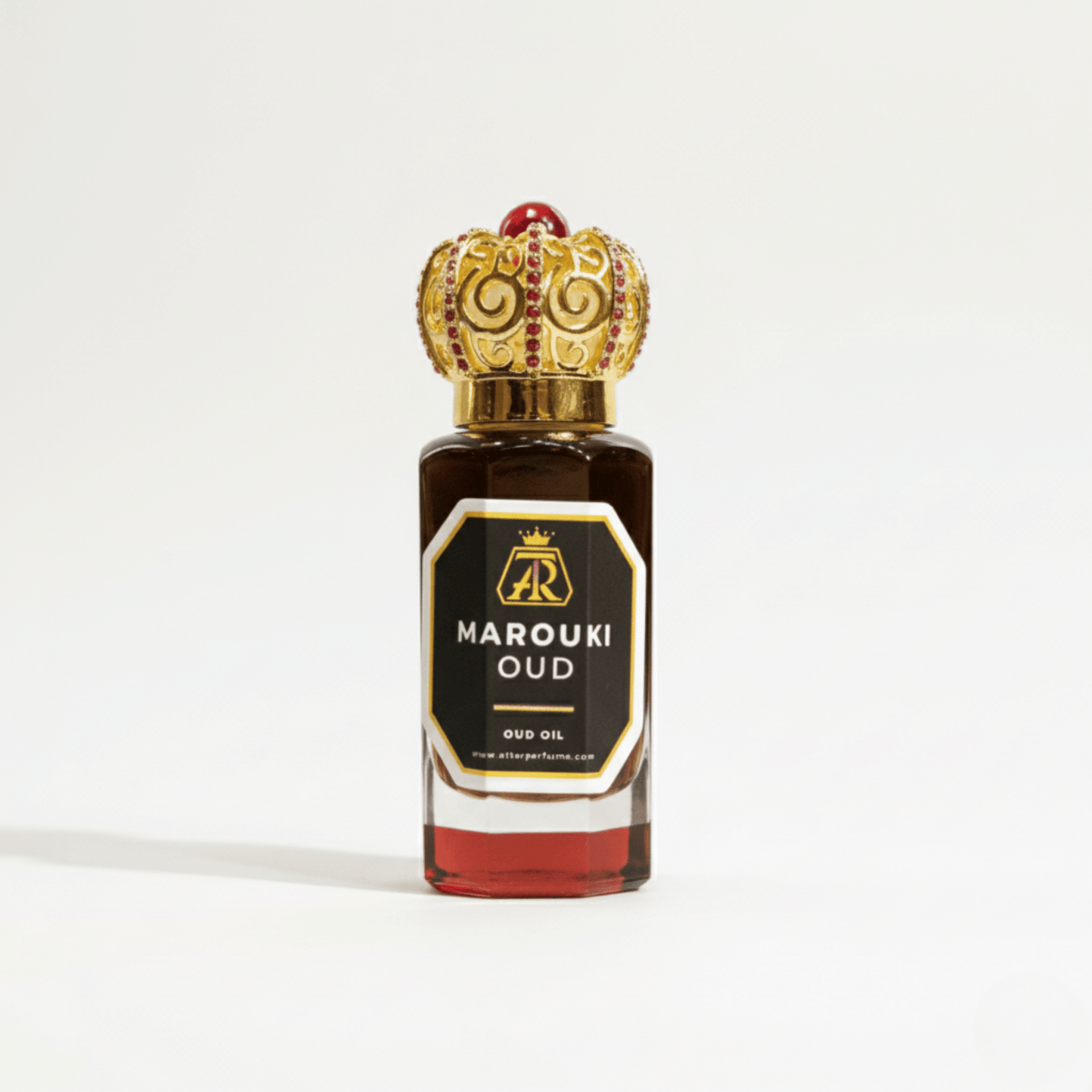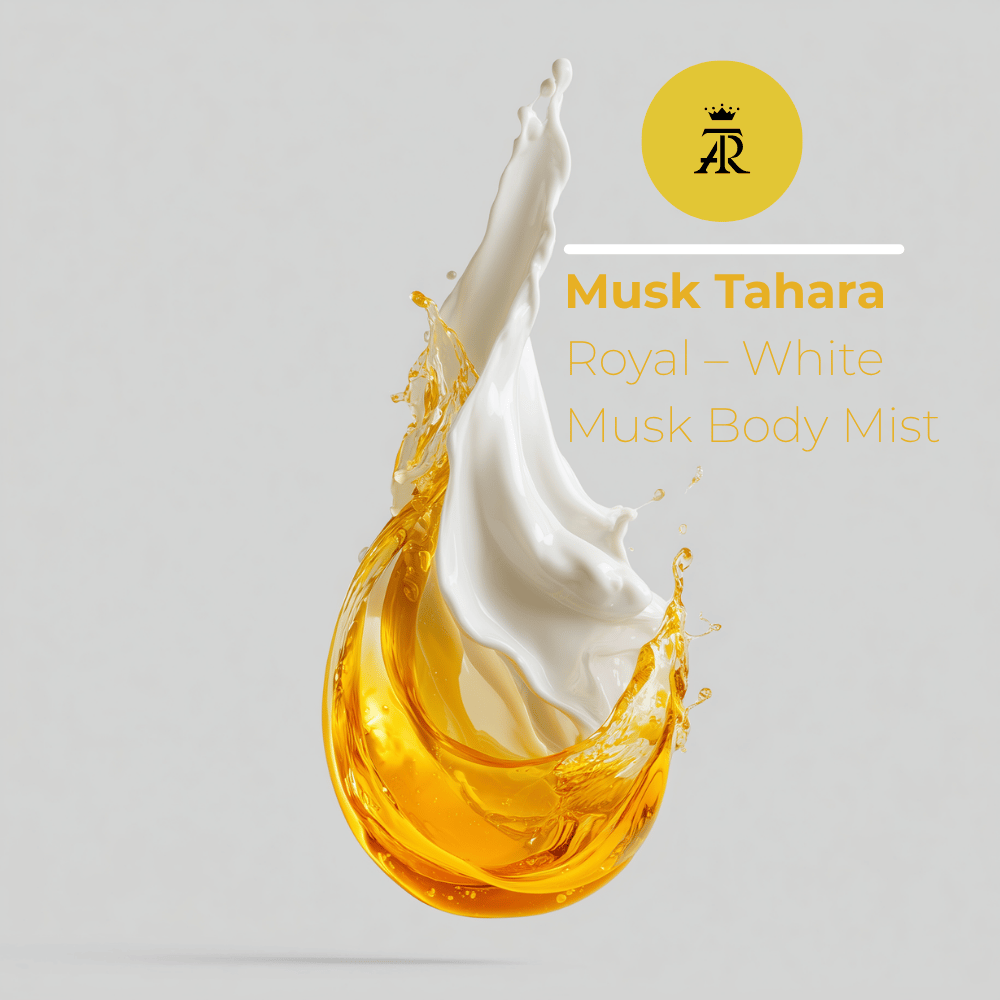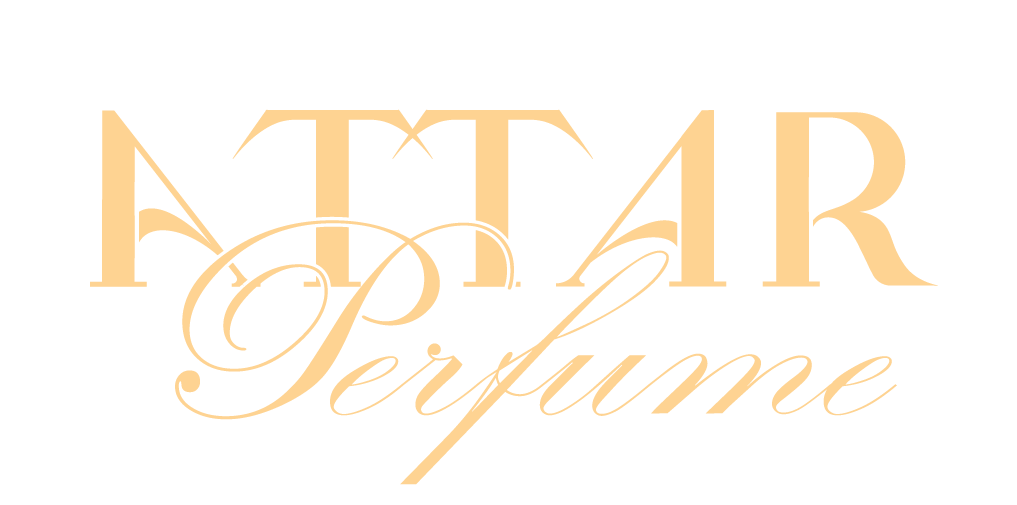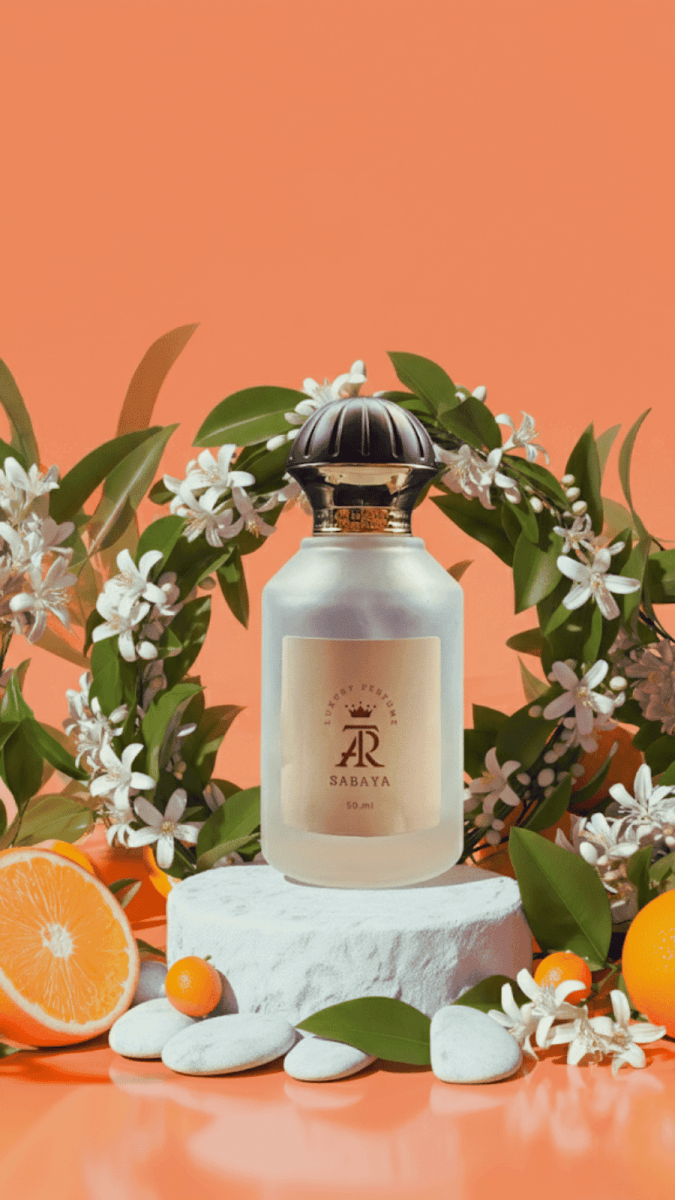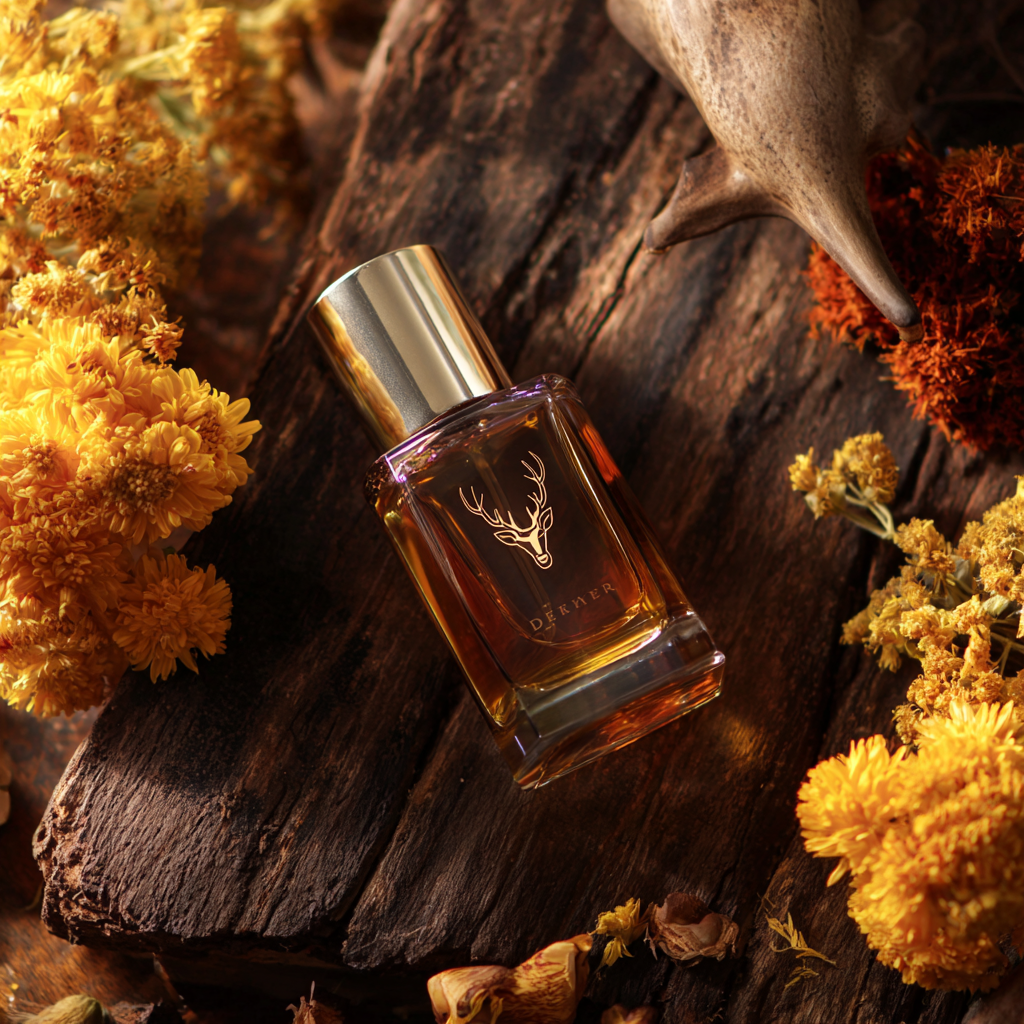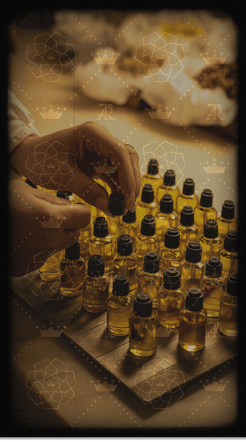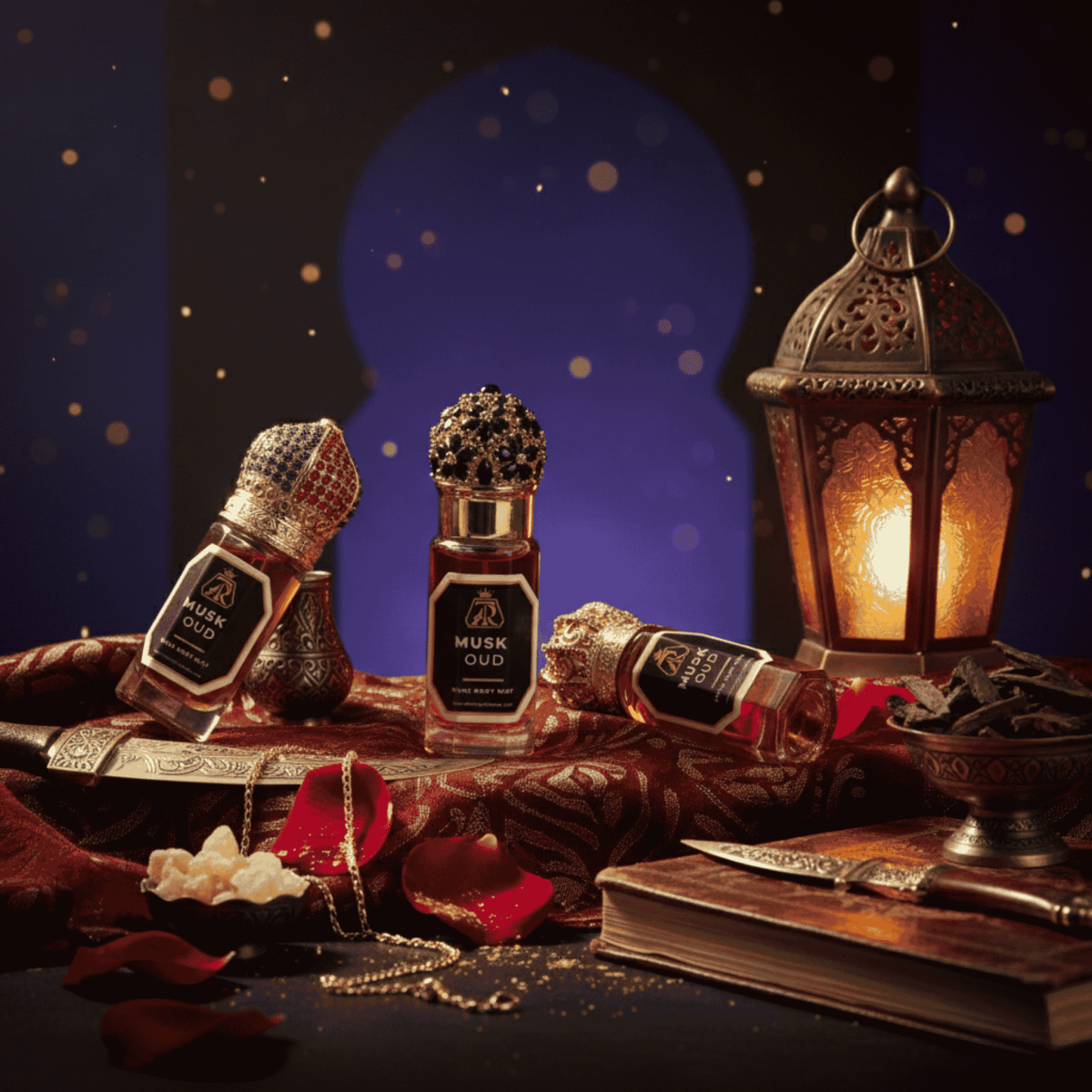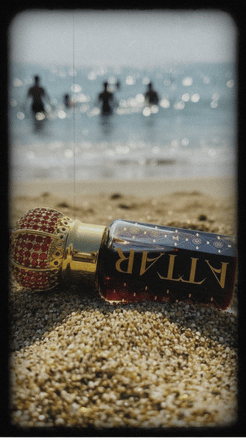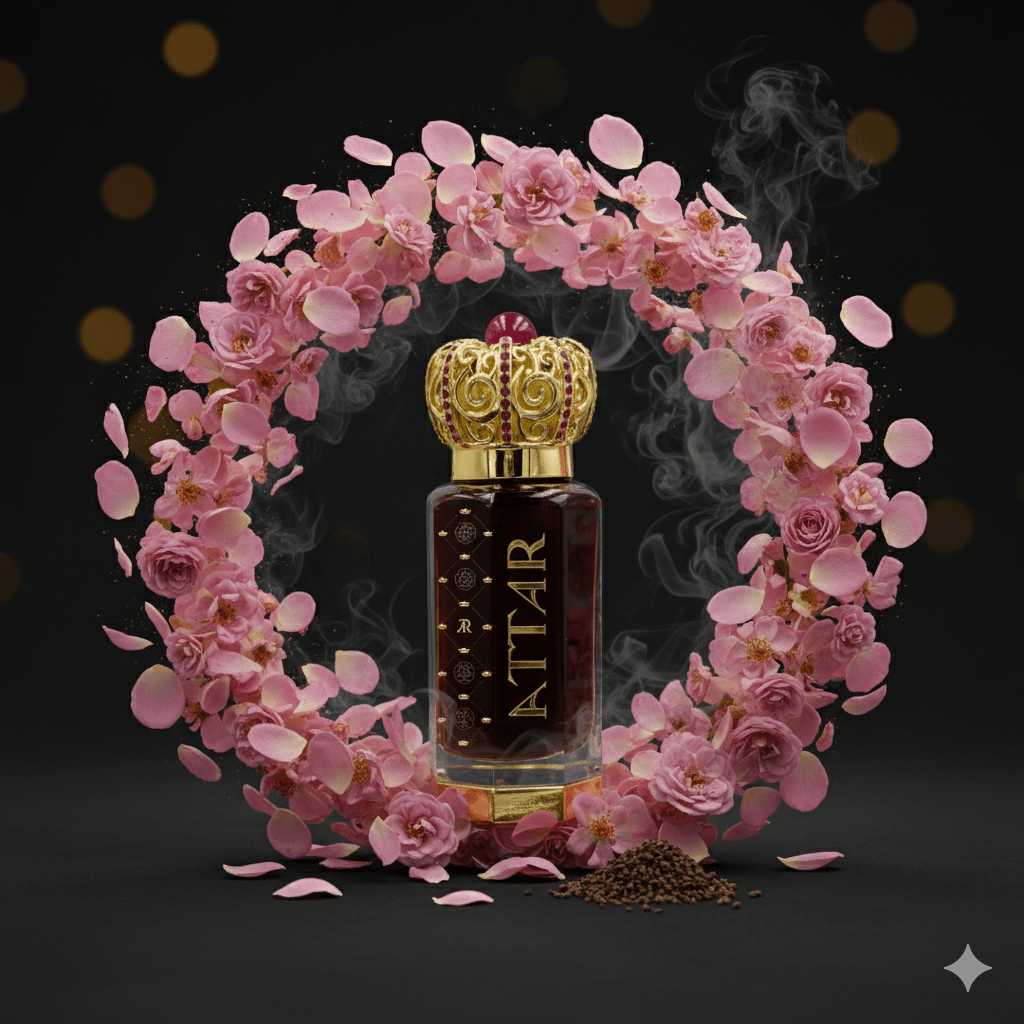The Complete Guide to Taif Rose
Taif Rose is the world's most expensive rose oil, costing $400+ per 12ml, harvested exclusively at dawn in Saudi Arabia's highlands at 2,000+ meter elevation. This comprehensive 4,000+ word guide reveals everything about Taif Rose: its sacred Islamic heritage (used to perfume the Holy Kaaba), unique scent profile (bright, honeyed, with citrus notes), traditional distillation methods, and why 40,000+ hand-picked petals produce just one tola of oil. Interactive calculators included to help you understand pricing, authenticity, and value.
📑 Complete Table of Contents
- What Makes Taif Rose Unique?
- The Scent Profile of Taif Rose
- Sacred Islamic Heritage & The Kaaba
- Geography & Growing Conditions
- Historical Journey Through Cultures
- Traditional Extraction Process
- 💰 Price Calculator (Interactive)
- Taif Rose in Modern Perfumery
- How to Verify Authenticity
- 🎯 Authenticity Quiz (Interactive)
- Investment Value & Storage
- Where to Buy Authentic Taif Rose
- Frequently Asked Questions

What Makes Taif Rose Unique: The World's Most Precious Rose
There are roses, and then there is the Taif Rose — a flower whose beauty transcends the visual and olfactory to become something spiritual, something sacred. Not merely a botanical specimen, the Taif Rose represents centuries of Islamic heritage, Arabian craftsmanship, and natural perfection that cannot be replicated anywhere else on Earth.
Cultivated exclusively in the cool highlands surrounding the city of Taif in western Saudi Arabia, this rose exists in a unique ecological niche that has shaped its extraordinary character. At elevations exceeding 2,000 meters, where mountain air meets desert heat, where mineral-rich volcanic soil nourishes ancient terraces, the Taif Rose develops aromatic compounds found in no other variety.
🌍 Geographic Uniqueness
Terroir Advantage: Like fine wine or Japanese Wagyu beef, Taif Rose is a product of its specific location. The combination of high altitude, arid mountain climate, volcanic soil, and traditional cultivation methods creates aromatics that cannot be duplicated.
Single Origin: While Rosa damascena (Damask rose) grows in Bulgaria, Turkey, and Iran, only roses grown in Taif's specific microclimate develop the distinctive bright, honeyed character that defines genuine Taif Rose.
The rarity extends beyond geography. Taif Rose blooms for only 6-8 weeks annually, typically from late March through mid-May. During this brief window, thousands of workers must harvest millions of blooms at dawn before the desert sun evaporates the precious essential oils. Miss this window, and the entire year's crop is lost.
The Scent Profile: Bright, Honeyed, Unforgettable
What truly distinguishes Taif Rose from all other rose varieties is its olfactory signature—a scent profile so distinctive that experienced perfumers can identify it instantly, even among dozens of rose samples.
The Aromatic Architecture
Top Notes (First 30 minutes): The opening is bright and almost sparkling—a burst of fresh rose petals mixed with honeyed sweetness and subtle citrus brightness. There's a crispness here, a mountain-air quality that sets it apart from the deeper, jammier character of traditional Damask rose. Some describe hints of bergamot or lemon zest dancing around the rose core.
Heart Notes (30 minutes - 4 hours): As the volatile top notes settle, Taif Rose reveals its true character. The honey deepens, becoming richer and more complex. Powdery notes emerge—reminiscent of high-quality rose cosmetics or vintage lipstick, but natural and refined. There's a subtle spiciness, almost like pink pepper, that adds dimension without overwhelming the rose.
Base Notes (4+ hours): The dry-down is where Taif Rose's longevity becomes apparent. While synthetic roses fade within hours, genuine Taif Rose maintains presence for 8-12+ hours on skin. The scent becomes softer, more intimate, with woody-musky undertones and a lingering sweetness that's never cloying. The powder notes remain, creating that signature "expensive perfume" quality.
🔬 Chemical Composition
The unique scent of Taif Rose comes from its specific ratio of aromatic compounds:
Citronellol (35-45%): Provides fresh, rose-like sweetness
Geraniol (15-25%): Adds honeyed, slightly citrus notes
Nerol (8-12%): Contributes fresh, sweet floral character
Phenyl Ethyl Alcohol (2-4%): Creates rosy, slightly spicy depth
Rose Oxide (trace): The "metallic rose" note that adds brightness
This specific composition, influenced by Taif's terroir, creates aromatics that are both more refined and more long-lasting than other rose varieties.
Sacred Islamic Heritage: The Rose That Perfumes the Kaaba
Beyond its olfactory beauty, Taif Rose holds profound spiritual significance in Islamic tradition—a status that elevates it from luxury ingredient to sacred symbol.
The Kaaba Connection
For over a thousand years, Taif Rose has been used to wash and perfume the Holy Kaaba in Mecca, Islam's most sacred site. During special ceremonies, particularly before Hajj season, the black cloth covering (kiswa) is removed, and the Kaaba's marble walls are washed with Taif rose water mixed with other traditional attars.
This isn't merely symbolic—the practice represents purity, devotion, and the highest form of honor. To use Taif Rose for the Kaaba is to offer the most precious, most beautiful fragrance from the land itself. The tradition continues today, performed by specially appointed custodians who prepare the rose water using methods passed down through generations.
The ritual process: Master distillers in Taif prepare special batches of rose water months in advance. The roses are harvested at dawn during the peak bloom period, immediately distilled in dedicated copper stills, and the resulting rose water is blessed and transported to Mecca under careful supervision. Only the finest distillations—the "heart cut" of the distillation—are selected for this sacred purpose.
☪️ Religious & Cultural Significance
Prophetic Tradition: The use of rose and other natural perfumes is encouraged in Islamic tradition, with numerous hadiths praising the use of fragrance for prayer and special occasions.
Royal Patronage: Saudi royalty and wealthy pilgrims traditionally purchase Taif Rose to anoint themselves before Hajj or Umrah, continuing an ancient practice.
Gifting Custom: Taif Rose attar is considered one of the most prestigious gifts in Arabian culture, often presented to honored guests and during important celebrations.
Bridal Tradition: In Gulf weddings, Taif Rose is traditionally applied to the bride, symbolizing purity, beauty, and blessing.
Historical Significance in Islamic Civilization
The connection between roses and Islamic culture runs deep. During the Islamic Golden Age (8th-13th centuries), Arab scholars and perfumers revolutionized the art of perfume-making. Jabir ibn Hayyan (721-815 CE), often called the father of chemistry, developed distillation techniques that allowed for the extraction of essential oils—techniques still used in Taif today.
Al-Kindi (801-873 CE), the renowned Arab polymath, wrote extensively about perfumes in his work "The Book of Perfume Chemistry and Distillation," documenting over 100 recipes, many featuring rose. These early Islamic perfumers understood what modern chemistry confirms: that proper distillation preserves the complex aromatic profile that makes natural ingredients irreplaceable.
Geography & Growing Conditions: The Terroir of Excellence
To understand why Taif Rose cannot be replicated elsewhere, we must examine the unique combination of geographic and climatic factors that define its terroir.
The Sarawat Mountains: Nature's Perfect Microclimate
Taif sits in the Sarawat Mountains of the Hejaz region, part of the Arabian Peninsula's western highlands. Unlike the scorching deserts that dominate Saudi Arabia's landscape, these mountains offer a dramatically different environment:
Elevation Advantage: At 1,700-2,400 meters above sea level, Taif experiences cooler temperatures than the surrounding lowlands. Summer temperatures range from 20-30°C (68-86°F), while winter nights can drop to near freezing. This temperature variation is crucial for rose cultivation, as moderate heat during the day encourages essential oil production, while cool nights preserve those oils within the petals.
Rainfall Patterns: The region receives 150-300mm of annual rainfall, primarily during winter and early spring. This limited but consistent moisture, combined with morning mountain mists, provides just enough water without the humidity that can cause fungal diseases or dilute essential oils.
Soil Composition: The volcanic origin of the Sarawat Mountains created mineral-rich, well-draining soils perfect for rose cultivation. These soils contain high levels of iron, calcium, and trace minerals that are absorbed by rose plants and potentially influence the final aromatic profile. The soil's pH (slightly alkaline, 7.0-7.5) matches rosa damascena's preferences perfectly.
Air Quality: The mountain altitude means thinner, drier air with intense UV radiation. This environmental stress causes the roses to produce higher concentrations of protective compounds—including many of the aromatic terpenes and phenols that create Taif Rose's distinctive scent.
Why Taif? Why Not Elsewhere?
This is the question many ask: if Rosa damascena can grow in Bulgaria, Turkey, Iran, and other regions, why is Taif Rose so unique? The answer lies in the precise combination of factors:
Altitude + Aridity: While Bulgarian roses grow at 300-500m elevation with 600mm+ rainfall, Taif's extreme altitude and arid climate stress the plants differently, producing more concentrated essential oils with different chemical profiles.
Soil Minerality: Taif's volcanic soils are unique to this region. Attempts to transplant Taif roses to similar elevations in Yemen or Jordan have failed to reproduce the same aromatic quality—the soil composition matters.
Microclimate Stability: The Sarawat Mountains create a remarkably stable microclimate year after year. This consistency allows rose plants to develop and maintain their characteristics across generations.
Traditional Practices: Taif's farmers have refined cultivation techniques over centuries, including specific pruning methods, traditional organic fertilizers, and harvest timing that maximizes essential oil content.
Historical Journey Through Cultures
Though deeply Arabian in identity today, Taif Rose's ancestry connects it to a vast historical network of rose cultivation and perfume-making spanning continents and millennia.
Ancient Persian Origins
The Rosa damascena species, from which Taif Rose descends, originated in ancient Persia (modern-day Iran) over 3,000 years ago. Persian gardens—the famous "pardis" that gave us the word "paradise"—were renowned for their roses, and Persian perfumers were the first to master rose water distillation around the 10th century CE.
When Islamic civilization expanded across Persia in the 7th century, it absorbed and enhanced this perfume-making knowledge. The technique of rose distillation spread along trade routes to Arabia, the Levant, and eventually to Taif, where local conditions created a unique variant.
The Silk Road and Spice Routes
During medieval times, Taif was an important stop on incense trade routes connecting Yemen (source of frankincense and myrrh) to Damascus, Baghdad, and beyond. Merchants carrying precious goods also carried botanical knowledge, seeds, and cultivation techniques.
It's believed that Taif's roses were initially planted during this period, possibly brought by traders from Persia or Damascus. The roses adapted to Taif's unique conditions over generations, gradually developing their distinctive characteristics.
Ottoman Influence
During Ottoman rule over the Arabian Peninsula (16th-20th centuries), Taif Rose gained prominence in Istanbul's perfume bazaars. Ottoman sultans, known for their love of roses and rose water, specifically sought Taif Rose for its superior quality. Historical records mention "Ward Taifi" (Taif Rose) being presented as tribute to the Ottoman court.
This royal patronage elevated Taif Rose's status and encouraged more sophisticated cultivation and distillation methods, as local producers competed to supply the most refined products to wealthy Ottoman officials and merchants.
Modern Renaissance
In the 20th century, as Western perfumery began seeking authentic natural ingredients, Taif Rose was "rediscovered" by international perfumers. Houses like Chanel, Dior, and Hermès began incorporating small amounts into their most prestigious compositions.
Today, Taif Rose represents a bridge between ancient tradition and modern luxury. Saudi government initiatives have worked to preserve traditional cultivation methods while introducing quality controls and certifications to protect against counterfeiting.
The Art of Traditional Extraction
Creating Taif Rose oil is one of perfumery's most labor-intensive processes, unchanged in its essentials for over a thousand years. This traditional craft requires not just technical skill but intuitive understanding passed through generations.
Dawn Harvest (Fajar Collection)
The process begins before sunrise, typically between 4:30-6:00 AM. Experienced pickers—often from families who have worked these gardens for generations—move through the terraced rose fields with practiced efficiency. Each bloom is assessed visually: only roses at peak bloom (fully open but not yet wilting) are selected.
Why dawn? During night, roses produce and store essential oils. As temperature rises after sunrise, these volatile oils begin evaporating. By harvesting at dawn, when morning dew still clings to petals, maximum essential oil content is preserved—up to 0.03% higher than roses picked just two hours later.
Hand-picking precision: Machines cannot distinguish bloom quality or avoid damaging delicate petals. Each rose is gently twisted from its stem, immediately placed in woven baskets that allow air circulation, and transported within minutes to the distillation facility.
Traditional Steam Distillation
Within one hour of harvest, fresh roses are loaded into traditional copper stills (alembics). Copper is essential—not just traditional but chemically important. Copper interacts with sulfur compounds in roses, removing potentially harsh notes while preserving delicate aromatic molecules.
The process: Roses are layered in the still's chamber, never compressed (which would damage cells and create off-notes). Pure mountain water is added to the still's base. Heat is applied gradually—traditional wood-fired methods allow precise temperature control that modern steam injection systems struggle to match.
Temperature precision: Water temperature must reach exactly 100°C (212°F) at sea level, slightly lower at Taif's altitude. Too hot, and fragile aromatic molecules break down. Too cool, and extraction is incomplete. Master distillers adjust constantly based on experience—observing steam flow, listening to the still, even smelling the air around the apparatus.
Duration: Full distillation takes 3-4 hours. The first condensation—the "head"—contains volatile compounds and is often discarded or used only for rose water. The "heart" (middle 70-80% of distillation) contains the finest aromatic profile and becomes premium rose oil. The "tail" (final 20%) has heavier, less refined notes and is used for lower grades or soap making.
Separation and Collection
As vapor condenses, it collects in a receiver vessel where a fascinating phenomenon occurs: rose oil, being less dense than water, floats to the surface. This creates two distinct layers.
Rose water (bottom layer): Contains water-soluble aromatic compounds. This isn't waste—Taif rose water is a valuable product in its own right, used in cooking, cosmetics, and religious rituals.
Rose oil/otto (top layer): The precious essential oil, golden to amber in color, is carefully skimmed from the surface using traditional spoons or modern separation funnels. The oil is thick, almost syrupy, especially when cooled.
Yield: From 1,000 kilograms of fresh roses, the distiller might obtain only 100-150 grams of pure rose oil—a 0.01-0.015% yield. This explains the extraordinary price: it takes approximately 40,000-50,000 rose blooms to produce 12ml of oil.
Aging and Maturation
Unlike wine or whiskey, rose oil doesn't require aging for years. However, a brief maturation period of 2-4 weeks allows the various aromatic compounds to harmonize and any remaining water traces to separate.
Storage conditions: Fresh rose oil is stored in amber or dark glass bottles to protect from UV light, which can degrade delicate molecules. Temperature is kept cool (15-20°C) but not refrigerated, as some compounds can crystallize when too cold.
Quality evaluation: After maturation, master perfumers evaluate each batch. Color, viscosity, and scent are assessed. The finest batches—those with perfect balance and no off-notes—are reserved for high-end perfumery. Secondary grades go to cosmetics or are blended with sandalwood to create traditional attars.
🔬 Modern vs. Traditional Methods
Solvent Extraction: Modern perfumery sometimes uses hexane or other solvents to extract rose absolute. This yields more product (higher efficiency) but produces a different aromatic profile—richer and heavier, but lacking the bright, fresh character of steam-distilled rose.
CO2 Extraction: Supercritical CO2 extraction is a newer method that produces excellent yields without chemical solvents. However, it's expensive and not traditionally used in Taif. The resulting oil smells "true" but slightly different from traditional steam distillation.
Why tradition persists: Taif producers maintain steam distillation not just for authenticity but because centuries of refinement have perfected this method for their specific roses and terroir. The aromatics produced via traditional distillation command premium prices that justify the lower yields.

💰 Interactive Taif Rose Price Calculator
Understand the true cost and value of Taif Rose oil with our interactive calculator. See how quantity, grade, and age affect pricing.
Your Taif Rose Calculation
Based on current market rates for authentic Taif Rose oil
Taif Rose in Modern Perfumery
Master perfumers approach Taif Rose with reverence—not just because of its price, but because of its incomparable aromatic qualities. In haute perfumery, Taif Rose is never used carelessly or in excess. It appears as signature, not decoration.
Why Perfumers Choose Taif Rose
✨ Professional Perfumer Insights
Exceptional Longevity: The high concentration and unique molecular structure mean Taif Rose lasts 12-18 hours on skin—far longer than Bulgarian or Turkish roses (6-10 hours) or synthetic rose compounds (4-8 hours).
Complex Evolution: Unlike linear synthetic roses, Taif Rose develops beautifully over time, revealing different facets throughout the day. The bright opening mellows into honeyed heart notes, finally settling into powdery, slightly woody base notes.
Luxurious Texture: When diluted in alcohol or oil, Taif Rose creates a perceived "thickness" or "richness" that synthetic materials struggle to replicate. Perfumers describe it as creating "cashmere" rather than "polyester" fragrances.
Cultural Authenticity: For Middle Eastern-inspired fragrances, nothing captures authenticity like genuine Taif Rose. Customers familiar with traditional attars can immediately identify synthetic substitutes.
Natural Blending: Taif Rose harmonizes beautifully with oud, sandalwood, amber, musk, saffron, and most traditional Middle Eastern ingredients—creating seamless compositions rather than obvious layers.
Famous Fragrances Featuring Taif Rose
While many perfume houses guard their ingredient sources, several prestigious fragrances are known or suspected to feature genuine Taif Rose:
In Niche Perfumery: Houses like Amouage, Roja Parfums, and Clive Christian have created compositions featuring Taif Rose, often in limited editions due to cost and availability. These fragrances typically retail for $300-800+ per 50ml.
In Traditional Attars: Classic Arabian perfumery houses like Ajmal, Arabian Oud, and Abdul Samad Al Qurashi create Taif Rose attars blended with sandalwood or oud, maintaining centuries-old formulas. These represent the most traditional and purest use of Taif Rose.
In Haute Parfumerie: Major French houses occasionally use Taif Rose in their most exclusive lines—though often in tiny percentages supplemented with Bulgarian rose or synthetic rose compounds to manage costs.
🎯 Interactive Authenticity Quiz
Think you can spot authentic Taif Rose? Test your knowledge:
Question 1: What's the primary harvest time for Taif Rose?
Question 2: How many rose petals are needed for 12ml of oil?
Question 3: What's the correct color of authentic Taif Rose oil?
Your Result:
Investment Value & Proper Storage
Beyond its beauty and spiritual significance, Taif Rose oil represents a tangible investment that can appreciate over time—much like fine wine, aged oud, or precious metals.
Why Taif Rose Appreciates
Limited Annual Supply: The total global production of genuine Taif Rose oil is estimated at only 200-400 kilograms annually. With growing demand from luxury perfumery and wealthy collectors, supply constraints drive prices upward.
Quality Improvement with Age: Like oud oil, properly stored Taif Rose improves with age. The various aromatic compounds harmonize over time, sharp notes mellow, and the overall scent becomes smoother and more refined. Oil aged 5-10 years commands significant premiums.
Scarcity of Traditional Production: As modernization reaches Taif, some traditional producers are retiring without successors. The number of families producing oil via traditional copper still distillation is declining, making their product increasingly rare.
Proper Storage Guidelines
🏺 Storage Best Practices
Container: Store in amber or cobalt glass bottles with airtight seals. Never plastic—rose oil can leach chemicals from plastic over time.
Temperature: Cool, stable temperatures (15-20°C / 59-68°F) are ideal. Avoid temperature fluctuations. A wine cellar or cool closet works well.
Light: Complete darkness is best. UV light degrades aromatic compounds. If displaying, use opaque containers.
Air Exposure: Minimize air contact. Consider transferring to smaller bottles as you use oil, reducing headspace.
Position: Store upright to prevent contact between oil and cap seals, which can degrade over time.
Environment: Low humidity (30-50%) prevents water absorption. Keep away from strong odors (coffee, spices) that can contaminate through imperfect seals.
Expected Appreciation: Anecdotal evidence from collectors suggests properly stored Taif Rose appreciates 5-15% annually in value. A bottle purchased for $400 today might sell for $600-800 in 5 years, while also improving in aromatic quality.
❓ Frequently Asked Questions
🌹 Experience Authentic Taif Rose
Discover genuine Taif Rose oil and traditional attars, sourced directly from Taif's heritage distilleries. Every bottle includes certificate of authenticity and detailed origin information.
Shop Taif Rose Collection →Free shipping over $99 | Authenticity guaranteed | Expert support
